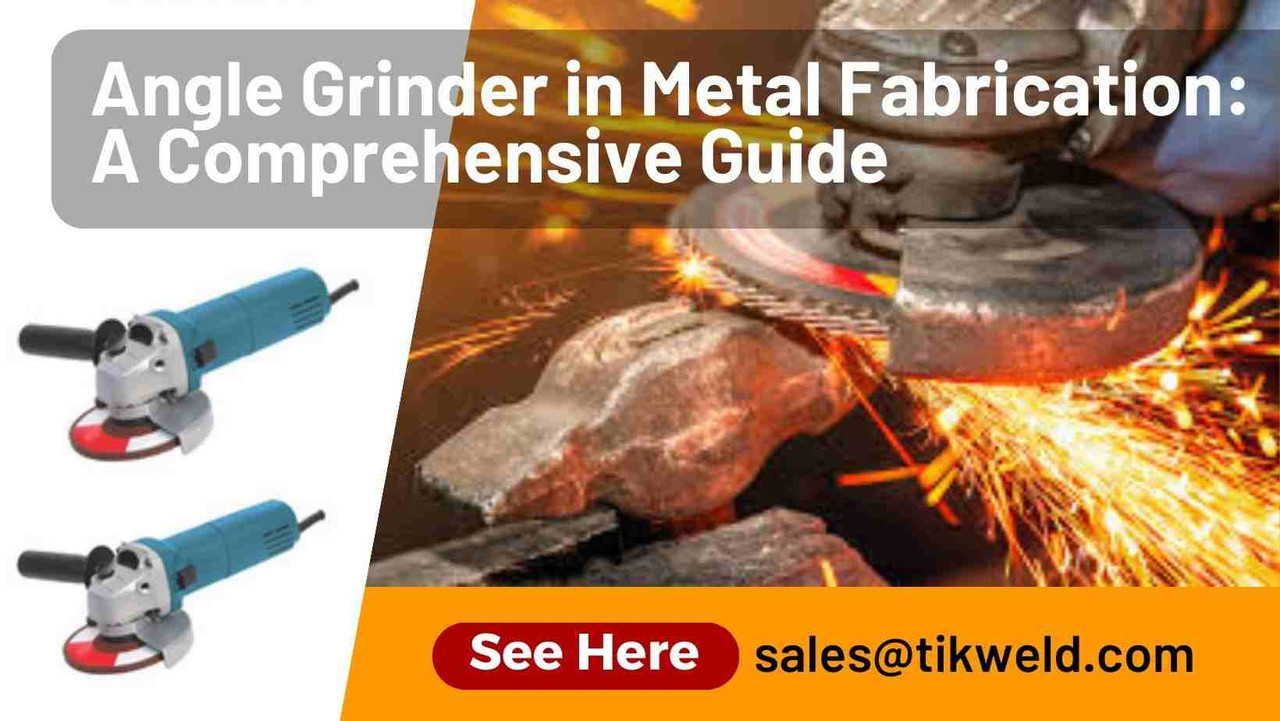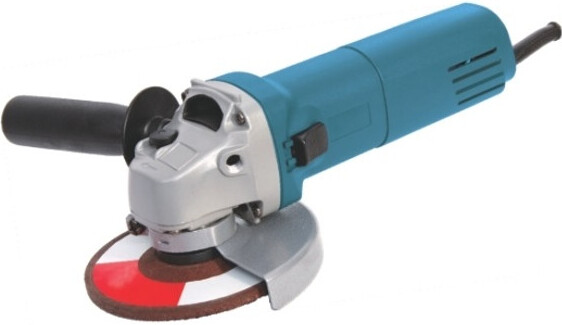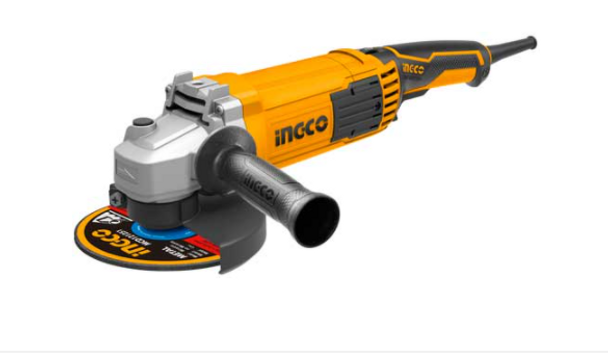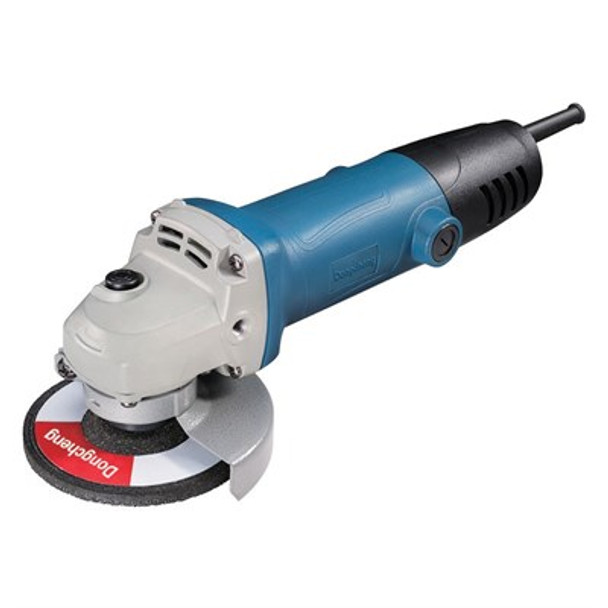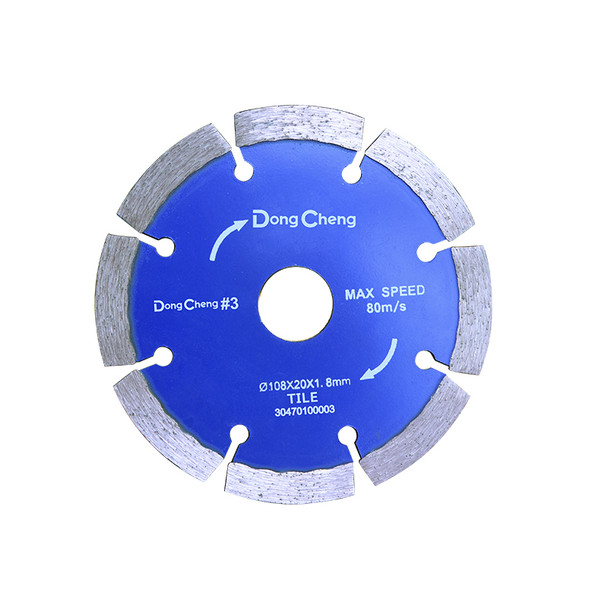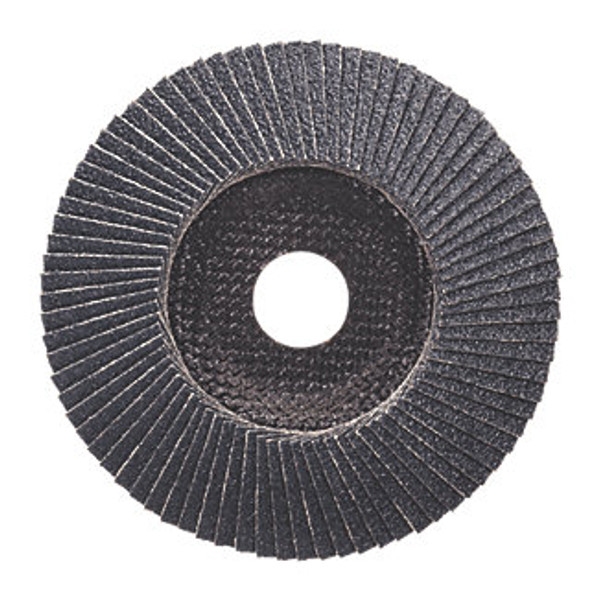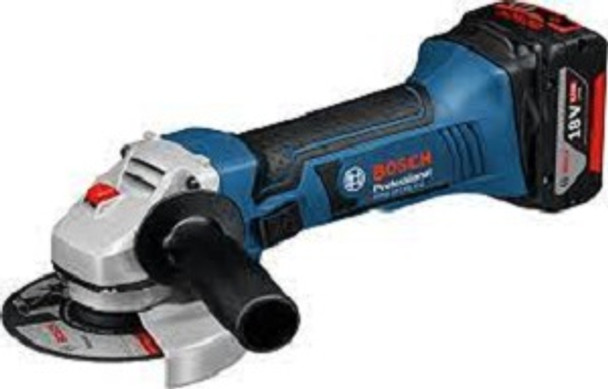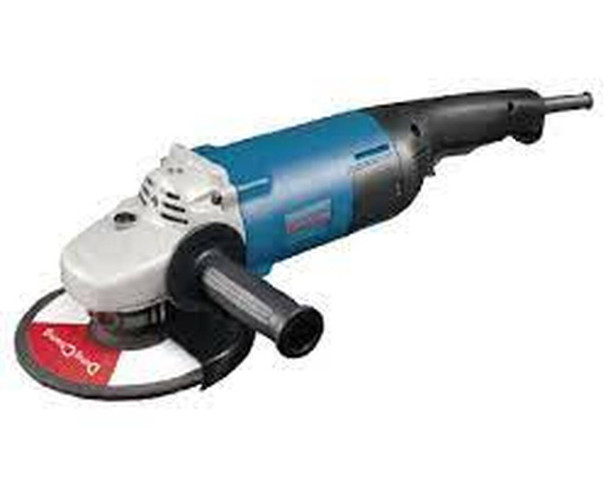Angle Grinder in Metal Fabrication: A Comprehensive Guide
In the realm of metal fabrication, the angle grinder is a versatile power tools, serving a multitude of crucial purposes for precision and efficiency which are paramount. One indispensable tool that has earned its place at the forefront of this industry is the angle grinder. A versatile and powerful companion, the angle grinder has revolutionized the way metals are shaped and cut.
The Angle grinder is an indispensable tool that excels in safe metal cutting with precision, grinding and smoothing welds, beveling edges for strong joints, and cleaning surfaces to perfection before welding or painting. It's also adept at shaping rebar, notching, slotting, and crafting intricate metal sculptures. Furthermore, angle grinders play a pivotal role in metal restoration, repair, and the meticulous removal of burrs and sharp edges, ensuring safety and quality. Their ability to operate in confined spaces makes them indispensable for a wide range of applications, from plumbing to complex on-site tasks. For professionals and artisans, consider the Dongcheng angle grinder, the ultimate tool for enhancing productivity and achieving precision in metal fabrication.
"Angle Grinder in Metal Fabrication: A Comprehensive Guide" serves as your definitive roadmap through this essential tool's role in crafting and transforming metal. Whether you're a seasoned metalworker or a novice enthusiast, this guide will unravel the intricacies of the angle grinder, providing you with the knowledge and techniques needed to excel in metal fabrication. Join us as we dive into the world of sparks and steel, where precision meets power.
Buy Online... DongCheng Angle Grinder DSM125A
Understanding Angle Grinders
What is an angle grinder?
An angle grinder, also known as a side grinder or disc grinder, is a handheld power tool used for grinding (abrasive cutting) and polishing. Angle grinders can be powered by electricity, compressed air, petrol, or batteries. They are versatile tools that can perform a variety of tasks, such as cutting metal, stone, concrete, or tile; removing rust, paint, or mortar; sharpening blades or tools; sanding wood or metal; and more.
Different types and sizes of angle grinders
There are different types and sizes of angle grinders available in the market, depending on the power source, disc size, speed, and features. Some of the common types are:
Corded angle grinders: These are electric-powered angle grinders that require a constant connection to a power outlet. They are usually more powerful, durable, and reliable than cordless models, but they have limited mobility and can pose a tripping hazard with the cord.
Cordless angle grinders: These are battery-powered angle grinders that offer more freedom of movement and portability than corded models. They are usually lighter, quieter, and easier to use, but they have less power, run time, and torque than corded models. They also require frequent charging and battery replacement.
Pneumatic angle grinders: These are air-powered angle grinders that require a connection to a compressed air source. They are usually lighter, cheaper, and more durable than electric models, but they have less power and speed than corded models. They also require an air compressor and hose to operate.
Petrol angle grinders: These are fuel-powered angle grinders that do not require any connection to a power source. They are usually the most powerful, heavy-duty, and expensive type of angle grinders, but they are also the loudest, heaviest, and most difficult to use. They also emit fumes and require regular maintenance.
The size of an angle grinder is determined by the diameter of the disc or wheel that it can accommodate. The most common sizes are 4 1/2 inches (115 mm), 5 inches (125 mm), 6 inches (150 mm), 7 inches (180 mm), and 9 inches (230 mm). The larger the disc size, the more power and cutting depth the angle grinder can provide, but also the more weight and bulkiness it will have.
Parts and components of an angle grinder
An angle grinder consists of several parts and components that work together to perform various functions. Some of the main parts and components are:
Disc or wheel: This is the part that does the actual grinding, cutting, or polishing. There are different types of discs or wheels available for different materials and purposes, such as abrasive discs, diamond discs, wire brushes, flap discs, sanding discs, etc. The disc or wheel is attached to a spindle that rotates at high speed when the tool is switched on.
Motor: This is the part that provides the power and speed for the disc or wheel to rotate. The motor can be electric, pneumatic, petrol, or battery-powered. The power and speed of the motor are measured in watts (W) and revolutions per minute (RPM), respectively. The higher the wattage and RPM, the more powerful and fast the angle grinder will be.
Gearbox: This is the part that transfers the power and speed from the motor to the spindle. The gearbox can be either fixed or variable. A fixed gearbox has a constant speed and torque output regardless of the load on the disc or wheel. A variable gearbox has an adjustable speed and torque output depending on the load on the disc or wheel. A variable gearbox allows for more control and versatility over different materials and tasks.
Handle: This is the part that allows the user to hold and maneuver the angle grinder. The handle can be either single or double. A single handle has one grip for one hand only. A double handle has two grips for both hands. A double handle offers more stability and safety than a single handle.
Switch: This is the part that allows the user to turn on and off the angle grinder. The switch can be either slide or paddle. A slide switch has a button that slides forward or backward to start or stop the tool. A paddle switch has a lever that presses down or releases to start or stop the tool. A paddle switch offers more convenience and safety than a slide switch.
Guard: This is the part that protects the user and the surroundings from flying sparks, debris, and dust. The guard can be either fixed or adjustable. A fixed guard has a set position and angle that cannot be changed. An adjustable guard has a movable position and angle that can be changed according to the direction and angle of the disc or wheel. An adjustable guard offers more flexibility and coverage than a fixed guard.
Buy Online... 5'' Angle grinder AG150018 INGCO
Safety Precautions to consider while using an Angle Grinder
Personal protective equipment (PPE)
When using an angle grinder, it is essential to wear appropriate personal protective equipment (PPE) to protect yourself from potential hazards. Some of the PPE that you should wear are:
Safety goggles or a full-face shield: These protect your eyes and face from flying debris, sparks, and dust that can cause serious injuries.
Gloves: These protect your hands from cuts, abrasions, burns, and vibrations that can cause injuries or disorders.
Ear plugs or muffs: These protect your ears from the high noise levels that can cause permanent hearing loss.
Dust mask or respirator: These protect your lungs from inhaling dust or fumes that can cause respiratory problems or diseases.
Leather apron or natural fiber clothing: These protect your body from sparks, heat, and flying debris that can cause burns or lacerations.
Safety shoes or boots: These protect your feet from falling objects, sharp edges, or hot surfaces that can cause injuries or burns.
Safe workspace setup
Before using an angle grinder, you should also ensure that your workspace is safe and clear of any hazards. Some of the steps that you should take are:
Secure the workpiece: You should clamp or fix the workpiece firmly to a stable surface to prevent it from moving or slipping during the grinding or cutting process.
Remove any flammable or explosive materials: You should keep your work area free of any materials that can catch fire or explode, such as gasoline, paint, solvents, etc. You should also obtain a hot work permit if required by your workplace.
Safe handling and operation of angle grinders
When using an angle grinder, you should also follow some basic rules of safe handling and operation to prevent any mishaps. Some of these rules are:
Use the right disc for the job: You should choose a disc that matches the size, speed, and material of your angle grinder and the task at hand. You should not use a cutting disc for grinding or vice versa. You should also check the condition and compatibility of the disc before using it.
Use the safety guard: You should always attach and adjust the safety guard to cover as much of the disc as possible and deflect any flying particles away from you. You should not remove or disable the safety guard.
Hold the grinder firmly with both hands: You should use a firm grip and a double handle if possible to control the grinder and avoid any kickback or loss of control. You should also keep your hands away from the disc and the spindle.
Position yourself properly: You should stand to the side of the wheel, not directly in line with it, to reduce the impact of a kickback or flying debris. You should also keep your body and clothing away from the disc and the spindle.
Provide adequate ventilation: You should ensure that there is enough air circulation in your work area to prevent the accumulation of dust or fumes that can pose a health or fire hazard.
Use proper lighting: You should ensure that there is enough lighting in your work area to see clearly what you are doing and avoid any mistakes or accidents.
Start and stop gradually: You should start the grinder at a low speed and gradually increase it to the desired level. You should not force or overload the tool. You should also stop the grinder before changing the disc, adjusting the guard, or moving to a different work area. You should not leave the tool running unattended.
Buy Online... DongCheng Angle Grinder 710W 115mm DSM02-115
Common safety mistakes to avoid
When using an angle grinder, you should also be aware of some common safety mistakes that people make and avoid them at all costs. Some of these mistakes are:
- Wearing loose or dangling clothing, jewelry, or hair: These can get caught in the disc or spindle and cause serious injuries or death.
- Using a damaged or defective tool or disc: These can break or malfunction and cause injuries or accidents.
- Using a wrong or mismatched disc: These can cause excessive wear, vibration, or overheating and damage the tool or the workpiece.
- Removing or modifying the safety guard: These can expose you to more risks of flying debris, sparks, or dust.
- Working near sparks, flames, or heat sources: These can ignite flammable or explosive materials and cause fires or explosions.
By following these safety precautions, you can use your angle grinder safely and effectively for various tasks. Remember to always respect the power and potential of this tool and use it with care and caution.
Types of Angle Grinder Discs and Wheels used During Metal fabrication.
Angle grinders are versatile tools that can perform a variety of tasks, such as cutting, grinding, polishing, sanding, and more. However, to achieve these tasks, you need to use the right disc or wheel for your angle grinder and your project. There are many types of discs and wheels available for angle grinders, each with its own features, functions, advantages, and disadvantages. Some of the most common types are:
1. Cutting-off and Grinding Wheels
Cutting-off and grinding wheels are fundamental for metal fabrication. They are thin, flat discs that are used for cutting or grinding metal, stone, concrete, or other materials. They are made of abrasive grains bonded together by a resin or metal matrix. The abrasive grains act as cutting edges that remove material from the workpiece as the disc rotates at high speed. They come in different sizes, shapes, and specifications to suit different applications.
The features and functions of cutting-off and grinding wheels depend on several factors, such as:
The type of abrasive: There are different types of abrasive grains used for cutting-off and grinding wheels, such as aluminium oxide (A), silicon carbide (C), zirconia alumina (Z), ceramic alumina (CA), diamond (D), etc. Each type has its own characteristics in terms of hardness, toughness, friability, shape, etc. For example, aluminium oxide is suitable for general-purpose metal cutting or grinding. Silicon carbide is suitable for non-ferrous metals or non-metallic materials. Zirconia alumina is suitable for hard metals or alloys. Ceramic alumina is suitable for high-performance metal cutting or grinding. Diamond is suitable for very hard materials such as stone or concrete.
The size of abrasive: The size of abrasive grains is measured by grit number. The higher the grit number, the smaller the grain size. The size of the abrasive affects the cutting or grinding performance and the surface finish of the workpiece. For example, a low grit number (coarse) is suitable for fast and rough cutting or grinding. A high grit number (fine) is suitable for slow and smooth cutting or grinding.
The shape of abrasive: The shape of abrasive grains can be either regular or irregular. The shape of the abrasive affects the cutting or grinding action and the wear resistance of the disc. For example, a regular shape (cubic, spherical, etc.) is suitable for uniform and consistent cutting or grinding. An irregular shape (angular, flaky, etc.) is suitable for aggressive and sharp cutting or grinding.
The type of bond: There are different types of bonds used to hold the abrasive grains together, such as resinoid (B), metal (M), vitrified (V), rubber (R), etc. Each type has its own characteristics in terms of strength, flexibility, heat resistance, etc. For example, resinoid bonds are suitable for high-speed and high-pressure cutting or grinding. Metal bonds are suitable for high-precision and high-durability cutting or grinding. Vitrified bonds are suitable for low-speed and low-temperature cutting or grinding. Rubber bonds are suitable for low-vibration and low-noise cutting or grinding.
The shape of the wheel: There are different shapes of cutting-off and grinding wheels, such as flat (type 1), depressed center (type 27), raised hub (type 28), etc. Each shape has its own advantages and disadvantages in terms of stability, accessibility, clearance, etc. For example, flat wheels are suitable for straight and perpendicular cutting or grinding. Depressed center wheels are suitable for angled and curved cutting or grinding. Raised hub wheels are suitable for flush and close cutting or grinding.
To select the right wheel for the material and the job, you need to consider the following steps:
- Identify the material you are working on: You need to know the hardness, density, and composition of the material you are working on. This will help you choose the right type of abrasive that can cut or grind it effectively and safely. For example, if you are working on steel, you need an aluminium oxide or zirconia alumina wheel. If you are working on aluminium, you need a silicon carbide wheel. If you are working on stone or concrete, you need a diamond wheel.
- Identify the task you are performing: You need to know the speed, power, precision, and finish that you want to achieve with your angle grinder. This will help you choose the right size, shape, and specification of the wheel that can perform the task you want. For example, if you want to cut a metal bar quickly and roughly, you need a large, thin, flat, coarse-grit wheel with a high speed rating. If you want to grind a metal surface smoothly and finely, you need a small, thick, depressed center, fine-grit wheel with a low speed rating.
- Identify the size and speed of your angle grinder: You need to know the diameter and speed of your angle grinder. This will help you choose a compatible wheel that matches your angle grinder. For example, if you have a 4 1/2 inch angle grinder with a speed of 10,000 rpm, you need a 4 1/2 inch wheel with a speed rating of at least 10,000 rpm.
Some examples of metal fabrication projects that require cutting-off and grinding wheels are:
- Metal cutting: Cutting-off wheels can be used to cut metal bars, rods, pipes, sheets, or profiles into desired shapes and sizes. This can be done for various purposes, such as fabrication, repair, or recycling .
- Metal grinding: Grinding wheels can be used to remove excess material, smooth rough edges, or sharpen tools or blades. This can be done for various purposes, such as finishing, shaping, or honing .
- Metal notching: Cutting-off wheels can be used to make notches or slots in metal parts or structures. This can be done for various purposes, such as fitting, joining, or reinforcing .
- Metal grooving: Grinding wheels can be used to make grooves or channels in metal surfaces. This can be done for various purposes, such as engraving, decorating, or marking
Buy Online... Dongcheng Diamond Cutting Blade for Tile, 108mm
2. Flap Discs and Fibre Discs
Flap discs and fibre discs: Flap discs and fibre discs serve unique roles in metal fabrication. They are discs that consist of overlapping layers of abrasive-coated cloth or fibre. They are used for grinding, finishing, or polishing metal, wood, or other materials. They offer a smoother and more consistent finish than cutting-off and grinding wheels. They also come in different sizes, shapes, and specifications to suit different applications.
The features and functions of flap discs and fibre discs depend on several factors, such as:
The type of abrasive: There are different types of abrasive grains used for flap discs and fibre discs, such as aluminium oxide (A), silicon carbide (C), zirconia alumina (Z), ceramic alumina (CA), etc. Each type has its own characteristics in terms of hardness, toughness, friability, shape, etc. For example, aluminium oxide is suitable for general-purpose metal grinding or finishing. Silicon carbide is suitable for non-ferrous metals or non-metallic materials. Zirconia alumina is suitable for hard metals or alloys. Ceramic alumina is suitable for high-performance metal grinding or finishing.
The size of abrasive: The size of abrasive grains is measured by grit number. The higher the grit number, the smaller the grain size. The size of the abrasive affects the grinding or finishing performance and the surface finish of the workpiece. For example, a low grit number (coarse) is suitable for fast and rough grinding or finishing. A high grit number (fine) is suitable for slow and smooth grinding or finishing.
The shape of abrasive: The shape of abrasive grains can be either regular or irregular. The shape of abrasive affects the grinding or finishing action and the wear resistance of the disc. For example, a regular shape (cubic, spherical, etc.) is suitable for uniform and consistent grinding or finishing. An irregular shape (angular, flaky, etc.) is suitable for aggressive and sharp grinding or finishing.
The type of backing: There are different types of backing materials used to support the abrasive layers, such as cloth (C), fibre (F), paper (P), etc. Each type has its own characteristics in terms of strength, flexibility, heat resistance, etc. For example, cloth backing is suitable for flexible and conformable grinding or finishing. Fibre backing is suitable for rigid and durable grinding or finishing. Paper backing is suitable for light and smooth grinding or finishing.
How to select the right disc for the material and the job
- Identify the material you are working on: You need to know the hardness, density, and composition of the material you are working on. This will help you choose the right type of abrasive that can grind or finish it effectively and safely. For example, if you are working on steel, you need an aluminium oxide or zirconia alumina disc. If you are working on aluminium, you need a silicon carbide disc. If you are working on wood, you need an aluminium oxide disc.
- Identify the task you are performing: You need to know the speed, power, precision, and finish that you want to achieve with your angle grinder. This will help you choose the right size, shape, and specification of the disc that can perform the task you want. For example, if you want to grind a metal surface quickly and roughly, you need a large, flat, coarse-grit disc with a high speed rating. If you want to finish a metal surface smoothly and finely, you need a small, conical, fine-grit disc with a low speed rating.
- Identify the size and speed of your angle grinder: You need to know the diameter and speed of your angle grinder. This will help you choose a compatible disc that matches your angle grinder. For example, if you have a 4 1/2 inch angle grinder with a speed of 10,000 rpm, you need a 4 1/2 inch disc with a speed rating of at least 10,000 rpm.
Some examples of metal fabrication projects that require flap discs and fibre discs are:
- Weld blending: Flap discs and fibre discs can be used to smooth out the weld beads and blend them with the base metal. This can improve the appearance and strength of the welds.
- Deburring: Flap discs and fibre discs can be used to remove the burrs or sharp edges that are formed after cutting or drilling metal. This can prevent injuries and improve the quality of the metal parts.
- Rust removal: Flap discs and fibre discs can be used to remove the rust or corrosion that accumulates on metal surfaces. This can restore the metal to its original condition and prevent further damage.
- Surface preparation: Flap discs and fibre discs can be used to clean, roughen, or smooth the metal surfaces before painting, coating, or welding. This can improve the adhesion and performance of the subsequent processes.
Buy Online... Bosch flap disc std 115mm 80 grit.
Applications of Angle Grinder in Metal Fabrication
1. Blending and Refining
Blending and refining is one of the key steps in metal fabrication and manufacturing processes. Surface blending and refining is vital for preparing the workpiece for paint or powder coating or finishing operations if applicable.
The process of blending and refining metal surfaces involves using abrasives to smooth out the surface irregularities and create a uniform finish. Depending on the desired finish, different types of abrasives can be used, such as flap discs, fibre discs, surface conditioning discs, etc. The abrasives are attached to an angle grinder and applied to the metal surface with varying pressure and speed. The abrasives remove a thin layer of metal and create a consistent scratch pattern that reflects light evenly.
The purpose of blending and refining metal surfaces is to improve the appearance, performance, and quality of the metal workpiece. Some of the benefits of blending and refining are:
- It removes any defects, burrs, or sharp edges that can cause injuries or damage¹².
- It reduces the risk of corrosion, rust, or contamination by creating a smooth and clean surface.
- It enhances the adhesion and durability of paint or coating by creating a rough and uniform surface.
- It increases the value and aesthetics of the metal product by creating a bright and polished surface.
Some tips and tricks for achieving a smooth and uniform finish are:
- Use a flap disc or a fibre disc for the initial blending or refining step. These abrasives can remove the weld seams and excess material quickly and smoothly.
- Use a surface conditioning disc for the final blending or refining step. These abrasives can create a fine and consistent scratch pattern with low heat and noise.
- Use a lower speed setting for the final blending or refining step. This will reduce the heat and friction and improve the finish quality.
- Use a light pressure and a large contact area for the final blending or refining step. This will reduce the stock removal and improve the finish smoothness.
- Use a lubricant or a coolant for the final blending or refining step. This will reduce the heat and dust and improve the finish brightness.
Deburring and Surface Preparation
Deburring and surface preparation are two important steps in metal fabrication and manufacturing processes. They involve removing any unwanted material from the metal surface, such as burrs, rust, dirt, paint, etc.
The process of deburring and surface preparation can be done by various tools and techniques, such as abrasives, brushes, files, scrapers, chemicals, etc. The tools and techniques are applied to the metal surface with varying pressure, speed, and direction. The tools and techniques remove a thin layer of metal and create a smooth and clean surface.
The purpose of deburring and surface preparation is to improve the appearance, performance, and quality of the metal workpiece. Some of the benefits of deburring and surface preparation are:
- It removes any defects, burrs, or sharp edges that can cause injuries or damage.
- It reduces the risk of corrosion, rust, or contamination by creating a smooth and clean surface.
- It enhances the adhesion and durability of paint or coating by creating a rough and uniform surface.
- It increases the value and aesthetics of the metal product by creating a bright and polished surface.
Deburring and surface preparation are essential for welding, coating, or polishing metal workpieces. Some of the reasons why deburring and surface preparation are important are:
- For welding: Deburring and surface preparation can improve the quality and strength of the welds by removing any impurities or contaminants that can interfere with the welding process or cause defects in the welds. Deburring and surface preparation can also improve the appearance and aesthetics of the welds by smoothing out any rough edges or uneven surfaces that can affect the welds' look.
- For coating: Deburring and surface preparation can improve the adhesion and durability of the coating by creating a rough and uniform surface that can bond better with the coating material. Deburring and surface preparation can also improve the performance and protection of the coating by removing any rust or corrosion that can weaken or damage the coating.
- For polishing: Deburring and surface preparation can improve the brightness and smoothness of the polishing by removing any scratches, marks, or stains that can affect the polishing result. Deburring and surface preparation can also improve the consistency and uniformity of the polishing by creating a fine and consistent scratch pattern that reflects light evenly.
Buy Online... Bosch GWS 18 V-LI Cordless Angle Grinder
Finishing and Polishing
Finishing and polishing are two related but distinct processes that aim to improve the appearance and quality of metal surfaces. Finishing is the process of creating a smooth and consistent surface by removing any scratches, marks, or stains that are left after cutting, grinding, or sanding¹². Polishing is the process of creating a shiny and reflective surface by applying a fine abrasive compound or pad that removes a very thin layer of metal and creates a mirror-like finish.
The process of finishing and polishing metal surfaces can be done by various tools and techniques, such as abrasives, compounds, pads, brushes, buffs, etc.¹². The tools and techniques are attached to an angle grinder, a buffing machine, or a hand-held tool and applied to the metal surface with varying pressure, speed, and direction. The tools and techniques remove a thin layer of metal and create a smooth and glossy surface.
The purpose of finishing and polishing metal surfaces is to enhance the aesthetics, performance, and quality of the metal workpiece. Some of the benefits of finishing and polishing are:
- It removes any defects, burrs, or sharp edges that can cause injuries or damage.
- It reduces the risk of corrosion, rust, or contamination by creating a smooth and clean surface.
- It increases the value and attractiveness of the metal product by creating a bright and polished surface.
- It improves the optical, electrical, or thermal properties of the metal by creating a reflective or conductive surface.
Finishing and polishing different metals and shapes can pose some challenges and require some solutions. Some of these are:
- Hard metals: Hard metals such as stainless steel or titanium are difficult to finish or polish because they have high resistance to abrasion. They require more time and effort to achieve a smooth and shiny surface. A possible solution is to use abrasives or compounds with higher grit numbers (finer) or harder materials (diamond) that can cut through the hard metals more effectively.
- Soft metals: Soft metals such as aluminium or copper are easy to finish or polish because they have low resistance to abrasion. However, they also tend to clog or load up the abrasives or pads with metal particles. This can reduce the cutting efficiency and damage the surface finish. A possible solution is to use abrasives or pads with lower grit numbers (coarser) or softer materials (silicon carbide) that can prevent clogging or loading up. Another solution is to use a lubricant or a coolant that can flush away the metal particles and reduce the heat and friction.
- Curved or irregular shapes: Curved or irregular shapes such as tubes, pipes, or spheres are challenging to finish or polish because they have varying surface areas and angles. They require more skill and precision to achieve a uniform and consistent surface finish. A possible solution is to use flexible or conformable abrasives or pads that can adapt to the shape and contour of the surface. Another solution is to use a rotary tool or a buffing machine that can follow the shape and angle of the surface.
Factors to consider when buying an angle grinder
When buying an angle grinder, there are several factors to consider, such as:
The power source: Angle grinders can be powered by electricity, compressed air, petrol, or batteries. Each power source has its own advantages and disadvantages in terms of power, portability, convenience, and cost.
The size and speed: Angle grinders come in different sizes and speeds, depending on the diameter of the disc or wheel that they can accommodate and the revolutions per minute (RPM) that they can deliver. The size and speed of an angle grinder affect its cutting depth, power, and performance. A larger disc size can provide more cutting depth and power than a smaller disc size, but it also adds more weight and bulkiness to the tool. Subsequently, a higher speed can provide more cutting efficiency and speed than a lower speed, but it also generates more heat and noise.
The features and functions: Angle grinders have various features and functions that enhance their usability, safety, and versatility. Some of the common features and functions are:
Variable speed: This feature allows you to adjust the speed of the disc or wheel according to the material and task you are working on. This can improve your control and accuracy over different applications.
Soft start: This feature reduces the initial torque and speed of the disc or wheel when you switch on the tool. This can prevent any kickback or loss of control that may occur due to sudden acceleration.
Anti-vibration: This feature reduces the vibration and noise of the tool by using rubber mounts or dampers. This can improve your comfort and reduce fatigue when using the tool for long periods.
Spindle lock: This feature locks the spindle or shaft of the tool when you change the disc or wheel. This can make the disc or wheel changing process easier and safer.
Adjustable guard: This feature allows you to adjust the position and angle of the guard that covers the disc or wheel. This can improve your visibility and protection from flying sparks, debris, or dust.
Buy Online... DongCheng Angle Grinder DSM03-230(Soft Start)
Maintenance and Troubleshooting
Regular maintenance is essential to prolong the angle grinder's lifespan and keep it in good working condition. Some of the steps for regular maintenance are:
Clean after each use: Remove any dust, debris, or grease from the grinder's body, disc, spindle, guard, and handle using a soft cloth, a brush, or compressed air. You should also wipe it with a damp cloth and dry it thoroughly to prevent rust or corrosion.
Inspect it before each use: Check the condition and compatibility of the disc, the power cord, the plug, the switch, and the brushes before using the grinder. You should replace any damaged, worn out, or incompatible parts with genuine parts from the manufacturer.
Lubricate periodically: Ensure you lubricate the spindle, the bearings, and the gears of the grinder periodically using a suitable lubricant recommended by the manufacturer. Follow the instructions in the user manual on how to lubricate the tool properly and safely.
Identifying and resolving common issues
Some of the common issues that may occur with angle grinders and how to resolve them are:
No power: If your angle grinder does not turn on, you should check the power source, the power cord, the plug, and the switch for any faults or damages. You should also check the fuse or circuit breaker for any tripping or blowing. Repair or replace any faulty or damaged parts as soon as possible.
Slow speed: If your angle grinder runs slower than usual, you should check the disc, the spindle, and the brushes for any clogging, wear, or dirt. You should also check the speed setting and adjust it accordingly. Also clean or replace any clogged, worn, or dirty parts as soon as possible.
Smoke from the tool: If your angle grinder produces smoke from the motor area, you should turn off and unplug the tool immediately. Check the disc, the spindle, and the motor for any overheating, short circuiting, or burning. Also check the ventilation slots for any blockage or obstruction. Finally repair or replace any overheated, short circuited, or burned parts as soon as possible.
Unusual noise: If your angle grinder makes unusual or loud noise when in use, you should turn off and unplug the tool immediately. Check the disc, the spindle, and the bearings for any vibration, looseness, or damage. You should also check the alignment and balance of the disc and spindle. You should tighten or replace any loose or damaged parts as soon as possible.
Safe storage and handling of angle grinders
- To store and handle angle grinders safely, you should follow these tips:
- Store the tool in a dry and cool place away from moisture, heat, or direct sunlight.
- Store the tool with its guard attached and its disc removed to prevent accidental activation or damage.
- Store the tool in its original case or a suitable container to protect it from dust, dirt, or impact.
- Handle the tool with care and avoid dropping or hitting it against hard surfaces.
- Handle the tool with both hands and use a firm grip to control it properly.
- Handle the tool with gloves, goggles, ear plugs, dust mask, and other appropriate personal protective equipment (PPE) to prevent injuries or hazards.
Buy Online... DongCheng Cordless brushless angle grinder -DCSM03-100
Frequently Asked Questions
Q1 How do I choose the right angle grinder for my needs?
A: Consider factors like the grinder's power rating, disc size, and the specific tasks you'll be performing. Smaller grinders are suitable for light-duty tasks, while larger ones handle more demanding jobs.
Q2 What are the maintenance requirements for angle grinders?
A: Regularly inspect the tool for wear, clean the air vents, and replace worn-out or damaged parts. Keep the grinder's motor and gears well-lubricated and store it in a dry place.
Q3 Can I use an angle grinder to cut or grind aluminum?
A: Yes, angle grinders can be used on aluminum, but it's essential to use the appropriate wheel or disc specifically designed for aluminum to prevent clogging and ensure a clean cut or grind.
Related Articles
How a Floor Grinder Works in 3 Easy Steps
12 essential welding equipment for fabrication work
Mastering Woodworking: Top-Rated Electric Power Tools for Precision and Efficiency
Conclusion
In this article, we have learned about the basics of angle grinders, their types, features, functions, and applications in metal fabrication. We learned about the various discs and wheels that can be used with angle grinders for different tasks, such as cutting, grinding, finishing, and polishing metal surfaces. We also learned about the safety precautions, best practices, and maintenance tips for using angle grinders effectively and safely. And saw some examples of metal fabrication projects that require angle grinders and how to choose the right angle grinder for your needs and budget.
Angle grinders are versatile and useful tools that can perform a variety of tasks in metal fabrication. They can help you create smooth and shiny metal products that are attractive and valuable. They can also help you improve the appearance, performance, and quality of your metal workpieces. Angle grinders are essential tools for any metal fabricator or hobbyist who wants to work with metal creatively and efficiently. For more information about angle grinders, you can read the articles below and if you have any more questions or are looking to buy an Angle grinder, Contact Us Today.

